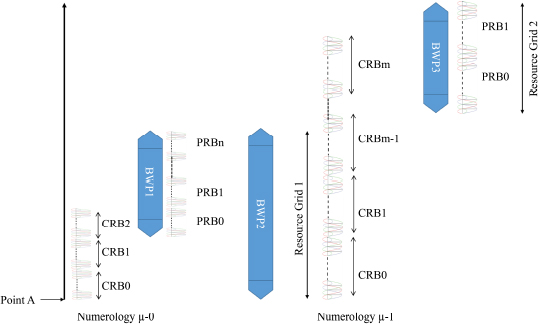75G-NR Radio Interface – Bandwidth Part
7.1. Bandwidth part
A BandWidth Part (BWP) corresponds to an allocation of resources in the frequency domain.
A BWP part is mobile specific.
Several mobiles can be configured on the same BWP.

Figure 7.1. Bandwidth part
A BWP in a resource grid can overlap.
The bandwidth part is defined by:
- – a frequency band corresponding to a number of PRBs (Physical Resource Block);
- – a numerology characterizing the bandwidth of the PRB block and the cyclic prefix (normal or extended);
- – a starting position calculated by the number of common resource block CRB (Common Resource Block) which separates the BWP band from the reference point A of the 5G-NR carrier.
The initial BWP corresponds to a 5G-NR sub-band on which the mobile UE (User Equipment):
- – searches for the SSB (Synchronization Signal Block) (see Chapter 6);
- – listens to paging notifications sent to the common search space and to specific control information sent to the dedicated search space;
- – issues the random access request for the establishment of the radio connection.
The size of the BWP depends on the number of PRBs and the numerology.
In the standby state, the bandwidth of the BWP is reduced to minimize the power consumption of the UE mobile.
In the connected state:
- – the mobile is configured with a BWP active in both directions of transmission (UL: UpLink and DL: DownLink);
Get NG-RAN and 5G-NR now with the O’Reilly learning platform.
O’Reilly members experience books, live events, courses curated by job role, and more from O’Reilly and nearly 200 top publishers.

